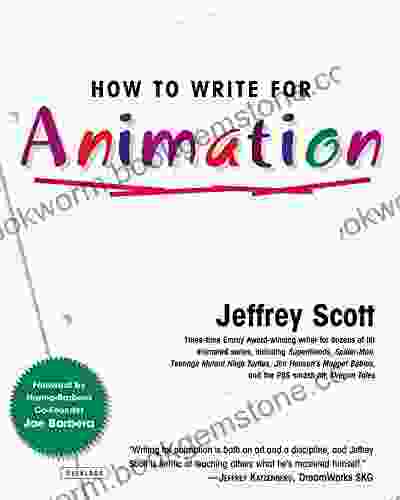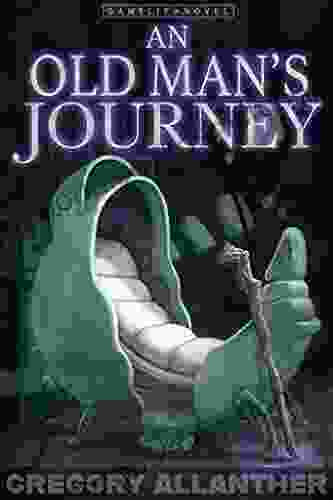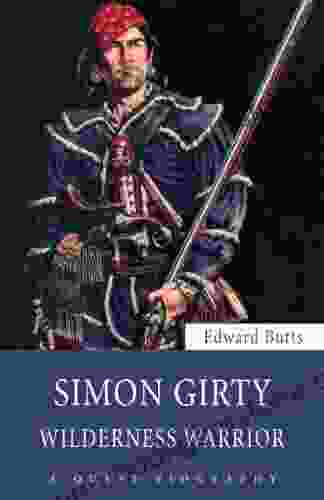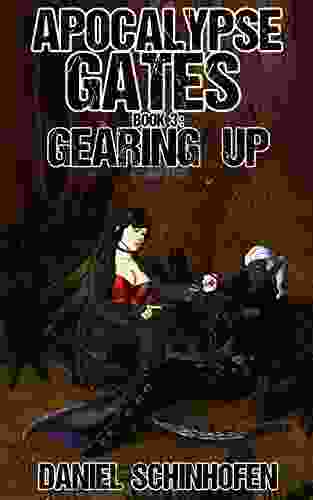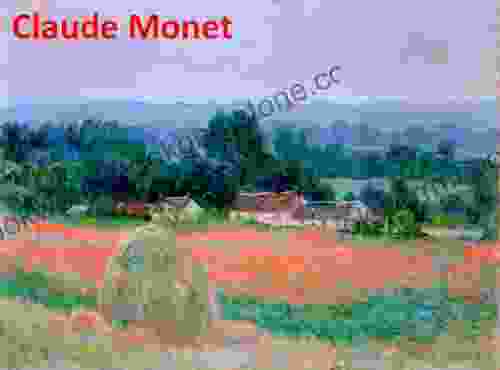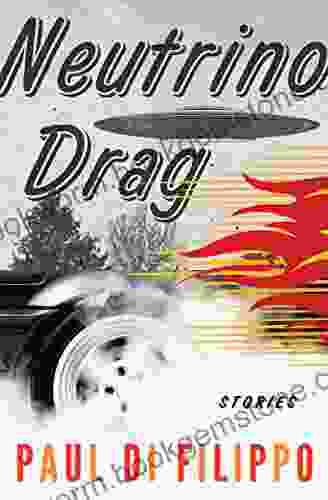How to Write for Animation: Captivating Your Audience with Memorable Scripts

Animation is a powerful medium that can transport audiences to fantastical worlds, evoke emotions, and deliver unforgettable stories. Crafting compelling scripts for animated productions is an intricate art form that requires a unique blend of storytelling prowess and technical understanding. Whether you're an aspiring animator, screenwriter, or simply a movie enthusiast, this comprehensive guide will provide you with invaluable insights into the art of writing for animation.
Understanding the Medium of Animation
Animation possesses distinct characteristics that set it apart from live-action filmmaking. These unique qualities fundamentally impact the writing process, dictating the narrative structure, pacing, and visual presentation. Understanding these fundamental aspects will serve as a solid foundation for developing effective animated scripts:
4.6 out of 5
| Language | : | English |
| File size | : | 1232 KB |
| Text-to-Speech | : | Enabled |
| Screen Reader | : | Supported |
| Enhanced typesetting | : | Enabled |
| Word Wise | : | Enabled |
| Print length | : | 224 pages |
| Lending | : | Enabled |
- Exaggeration and Abstraction: Animation allows for exaggerated movements, expressions, and designs, enabling screenwriters to convey emotions and ideas in a more vibrant and imaginative manner.
- Unlimited Possibilities: Unlike live-action, animation is not constrained by the laws of physics or real-world limitations. Writers have the freedom to create imaginative characters, explore extraordinary worlds, and defy gravity.
- Visual Storytelling: In animation, the visuals play a pivotal role in conveying the story. Writers must carefully consider the interplay between dialogue, action, and visuals to create a cohesive and engaging narrative.
Crafting Compelling Characters
Characters are the heart and soul of any animated production. Developing memorable characters that resonate with the audience is crucial for capturing their attention and evoking emotions. Here are some key considerations for crafting compelling animated characters:
- Strong Motivations and Flaws: Characters should be driven by clear motivations that shape their actions. Additionally, incorporating realistic flaws humanizes them, making them more relatable and empathetic.
- Distinct Personalities: Each character should have a unique voice, mannerisms, and physical appearance that differentiates them from others. This individuality adds depth and variety to the animated world.
- Emotional Resonance: Animated characters should evoke emotions in the audience through their actions, dialogue, and expressions. Creating a connection between the audience and the characters is essential for building empathy and investment in the story.
Structuring the Narrative
A well-structured narrative is the backbone of any successful animated production. Writers must master the art of storytelling, expertly weaving together various elements to create a captivating and engaging experience. Here are some fundamental principles of narrative structure in animation:
- Strong Inciting Incident: The story begins with a compelling event that sets the plot in motion and introduces the central conflict.
- Rising Action: A series of events builds tension, develops character arcs, and raises the stakes.
- Climax: The pivotal moment where the main conflict reaches its peak and is resolved.
- Falling Action: The consequences of the climax unfold, leading to a resolution.
- Denouement: The final scenes provide closure and a sense of resolution, leaving the audience with a lasting impression.
Writing Effective Dialogue
Dialogue plays a crucial role in conveying character personalities, advancing the plot, and creating emotional connections. In animation, dialogue must be concise, engaging, and visually appealing. Here are some tips for writing effective dialogue for animation:
- Keep it Simple: Animated dialogue should be clear, concise, and easy to understand. Avoid overly complex language or technical jargon that may alienate the audience.
- Use Subtext: Subtext is the unspoken meaning conveyed through dialogue. It adds depth and nuance to characters and situations, allowing the audience to infer hidden thoughts and emotions.
- Create Visual Appeal: Dialogue should not only sound good but also look visually appealing on screen. Consider the timing, rhythm, and placement of dialogue to enhance the visual storytelling.
Collaborating with Animators
Writing for animation is a collaborative process that involves close collaboration with animators. Open communication and mutual understanding are essential for translating the written word into captivating visual storytelling. Here are some strategies for effective collaboration with animators:
- Communicate Clearly: Describe actions, expressions, and movements in detail to ensure the animator understands your vision.
- Provide Context: Explain the motivations, relationships, and backstories of the characters to help the animators bring them to life.
- Be Open to Feedback: Animators may have valuable insights and suggestions that can enhance the visual execution of the story.
Additional Tips and Resources
Beyond the core principles outlined above, aspiring animation writers can benefit from additional tips and resources to refine their craft:
- Study Animated Films: Analyze successful animated films to identify effective storytelling techniques, character development, and visual storytelling.
- Join Writing Groups: Collaborate with other writers to receive feedback, share ideas, and improve your writing skills.
- Attend Workshops and Courses: Seek professional guidance from experienced screenwriters and animators to deepen your understanding of the craft.
- Create Short Animated Films: Experiment with writing and producing short animated films to gain practical experience and refine your techniques.
Writing for animation is an art form that requires a blend of storytelling prowess, technical understanding, and collaborative spirit. By mastering the principles outlined in this guide, aspiring writers can craft compelling scripts that captivate audiences, evoke emotions, and leave lasting impressions. Remember, the journey to becoming a successful animation writer is an ongoing process of learning, practice, and collaboration.
As you embark on your animation writing journey, embrace the unique possibilities and challenges that the medium offers. Let your imagination soar, create memorable characters, structure captivating narratives, and collaborate effectively with animators to bring your animated visions to life.
4.6 out of 5
| Language | : | English |
| File size | : | 1232 KB |
| Text-to-Speech | : | Enabled |
| Screen Reader | : | Supported |
| Enhanced typesetting | : | Enabled |
| Word Wise | : | Enabled |
| Print length | : | 224 pages |
| Lending | : | Enabled |
Do you want to contribute by writing guest posts on this blog?
Please contact us and send us a resume of previous articles that you have written.
 Best Book
Best Book Page Flip
Page Flip Bookshelf
Bookshelf Literary loom
Literary loom Chapter
Chapter Bookish
Bookish PageTurner
PageTurner Bibliophile
Bibliophile Story
Story Inkwell
Inkwell Bookworm
Bookworm Labyrinth
Labyrinth Plot Twist
Plot Twist Prose
Prose Paperback
Paperback Storyteller
Storyteller Sanctuary
Sanctuary Fiction
Fiction Reading
Reading Chronicle
Chronicle Read
Read Meghan March
Meghan March Thomas Nast
Thomas Nast Marcos Enrique Ruiz Rivero Ii Aviel
Marcos Enrique Ruiz Rivero Ii Aviel David Hallberg
David Hallberg Daniel Pennac
Daniel Pennac Kushanava Choudhury
Kushanava Choudhury Kirill Klevanski
Kirill Klevanski Lawrence Hill
Lawrence Hill Susana Martinez Conde
Susana Martinez Conde Roderick Beaton
Roderick Beaton Nicole R Fleetwood
Nicole R Fleetwood Henry K Miller
Henry K Miller Matt Brown
Matt Brown Darwyn Cooke
Darwyn Cooke David Bellamy
David Bellamy Jack Hartnell
Jack Hartnell Dartanya A Williams Sr
Dartanya A Williams Sr Paul Schrader
Paul Schrader Steve Erickson
Steve Erickson Jahquel J
Jahquel J Kathy Arlyn Sokol
Kathy Arlyn Sokol Tim Clissold
Tim Clissold Mark Hillary
Mark Hillary Mark Mazower
Mark Mazower Heather Alexander
Heather Alexander Elizabeth M Bonker
Elizabeth M Bonker Troy Anthony Platt
Troy Anthony Platt Darren Craig
Darren Craig David Margolick
David Margolick Daniel Schinhofen
Daniel Schinhofen Donna Everhart
Donna Everhart Kyle West
Kyle West Mike Farris
Mike Farris Ryukyu Saito
Ryukyu Saito Lillian Colon
Lillian Colon Liz Marsham
Liz Marsham David Koenig
David Koenig E M Hardy
E M Hardy Kenneth Clark
Kenneth Clark Edmond De Goncourt
Edmond De Goncourt Ernest Shackleton
Ernest Shackleton Darktechnomancer
Darktechnomancer Fx Holden
Fx Holden Crystal Allen
Crystal Allen Sarfraz Manzoor
Sarfraz Manzoor William Henry Jackson
William Henry Jackson Gayne C Young
Gayne C Young Thomas Booth
Thomas Booth David Aston
David Aston Ilona Andrews
Ilona Andrews Ian Fleming
Ian Fleming Rachel Howzell Hall
Rachel Howzell Hall Gerald Clark
Gerald Clark Roy Simmons
Roy Simmons David Tuffley
David Tuffley Glenn Dixon
Glenn Dixon David Gessner
David Gessner Mark Arnold
Mark Arnold Stephen Coonts
Stephen Coonts Mark Willenbrink
Mark Willenbrink Sarah Waters
Sarah Waters David Lebovitz
David Lebovitz J T R Brown
J T R Brown Rosanna Ley
Rosanna Ley Ignacio J Esteban
Ignacio J Esteban Ann Cleeves
Ann Cleeves Veronique Blanchard
Veronique Blanchard Jerzy Kosinski
Jerzy Kosinski Wes Singletary
Wes Singletary Terry Pratchett
Terry Pratchett Jonathan Dehart
Jonathan Dehart Daniel Suarez
Daniel Suarez Stanley Vestal
Stanley Vestal Dervla Murphy
Dervla Murphy Greg Dragon
Greg Dragon Mimi Matthews
Mimi Matthews Virginia Melville Cowart
Virginia Melville Cowart Mike Doyle
Mike Doyle Darby Penney
Darby Penney Davey Johnson
Davey Johnson Joni Eareckson Tada
Joni Eareckson Tada Jeffrey Weiss
Jeffrey Weiss Stephanie Pui Mun Law
Stephanie Pui Mun Law Daniel Ritchie
Daniel Ritchie Dawn C Crouch
Dawn C Crouch Daniel Okrent
Daniel Okrent University Press
University Press Simon Callow
Simon Callow Danyel Smith
Danyel Smith Fredric Jameson
Fredric Jameson V D Bucket
V D Bucket P W Jordan
P W Jordan Raven Rivers
Raven Rivers Stella Blum
Stella Blum Laquette
Laquette Mako
Mako David Schwartz
David Schwartz Robert Jordan
Robert Jordan Madelynn Dickerson
Madelynn Dickerson Henry Evans
Henry Evans Danny White
Danny White David W Cameron
David W Cameron Joseph Abboud
Joseph Abboud Diane Chamberlain
Diane Chamberlain Gavin Larsen
Gavin Larsen David Codamo
David Codamo Ryan Hendrickson
Ryan Hendrickson James Mcbride
James Mcbride Christopher Panaretos
Christopher Panaretos Posey Parks
Posey Parks Josh Karp
Josh Karp Sonia Choquette
Sonia Choquette Jennifer Julie Miller
Jennifer Julie Miller Maryse Conde
Maryse Conde Mary G Houston
Mary G Houston Dartagnan
Dartagnan Trip Stevens
Trip Stevens Richard Wagamese
Richard Wagamese David Roberts
David Roberts Glenn Kardy
Glenn Kardy Natascha Carrel
Natascha Carrel Larry Miller
Larry Miller Jim Krause
Jim Krause David Goudsward
David Goudsward Susan Stoker
Susan Stoker Manohla Dargis
Manohla Dargis James Lee Burke
James Lee Burke David Stevens
David Stevens Ken Britz
Ken Britz Richard Brody
Richard Brody Thomas Sowell
Thomas Sowell Lauren Markham
Lauren Markham Tim Hodkinson
Tim Hodkinson Warren Berger
Warren Berger Elizabeth Gilpin
Elizabeth Gilpin Elizabeth F Heath
Elizabeth F Heath Stanley Lane Poole
Stanley Lane Poole Timothy Ellis
Timothy Ellis Emily Owen
Emily Owen Jack Vance
Jack Vance Kim Stanley Robinson
Kim Stanley Robinson George L Wybenga
George L Wybenga Jayne Castle
Jayne Castle Cornelius C Kubler
Cornelius C Kubler Rick Stein
Rick Stein Dave Watson
Dave Watson Denise Bosler
Denise Bosler Jim Downing
Jim Downing Ivan Doig
Ivan Doig David Riley
David Riley Lise Herzog
Lise Herzog Rachel Mintz
Rachel Mintz David Britland
David Britland Spider Robinson
Spider Robinson Mark Mccrum
Mark Mccrum George Morton Jack
George Morton Jack Peter Millar
Peter Millar Linda Leaming
Linda Leaming Marion Mcnealy
Marion Mcnealy Tom Spector
Tom Spector John Rae
John Rae Victor Zugg
Victor Zugg Gene Deitch
Gene Deitch Harry Bernstein
Harry Bernstein William Morris
William Morris Dawnn Karen
Dawnn Karen Lynnea Lee
Lynnea Lee Judy Batalion
Judy Batalion Robert Arp
Robert Arp Drew Pritchard
Drew Pritchard David Canford
David Canford Gloria Anzaldua
Gloria Anzaldua David Plumbley
David Plumbley Pen Quiller
Pen Quiller Diego Rica
Diego Rica Darren Waldron
Darren Waldron Marisa Handler
Marisa Handler Maxine Hong Kingston
Maxine Hong Kingston David Hagberg
David Hagberg Gary Greene
Gary Greene Stu Glauberman
Stu Glauberman Patrick Bixby
Patrick Bixby Bill Gardner
Bill Gardner Pam Flowers
Pam Flowers David Brin
David Brin Kim Cash Tate
Kim Cash Tate Patty Brown
Patty Brown Yossi Klein Halevi
Yossi Klein Halevi Steve Roberts
Steve Roberts Silas Munro
Silas Munro R P Jones
R P Jones Dzongsar Jamyang Khyentse
Dzongsar Jamyang Khyentse Klaus Carl
Klaus Carl John Richardson
John Richardson Jemma Westbrook
Jemma Westbrook Darren Arnold
Darren Arnold J G Heck
J G Heck Jean Daive
Jean Daive Iesha Bree
Iesha Bree Daryl Lane
Daryl Lane Martin Turner
Martin Turner Miles J Unger
Miles J Unger Nancy Uno
Nancy Uno Vivienne Cawson
Vivienne Cawson Debby Detering
Debby Detering Danielle Kroll
Danielle Kroll Pete Hamill
Pete Hamill Mitch Weiss
Mitch Weiss John Mcmanus
John Mcmanus Simon R Green
Simon R Green Rafael Ocasio
Rafael Ocasio Rob Mendez
Rob Mendez Dave White
Dave White Kimberly Wilkes
Kimberly Wilkes Donna Tartt
Donna Tartt Fang Fang
Fang Fang Diane Alber
Diane Alber Robert Sitton
Robert Sitton Wanda Compres
Wanda Compres Liron Yanconsky
Liron Yanconsky David Hopkins
David Hopkins Michal Ramsey Smith
Michal Ramsey Smith David Langlieb
David Langlieb Danielle Allen
Danielle Allen Robert Appel
Robert Appel Jamer Hunt
Jamer Hunt Steve Russell
Steve Russell Jeffrey Scott
Jeffrey Scott Denise Essex
Denise Essex Thomas Pecore Weso
Thomas Pecore Weso Michael Schumacher
Michael Schumacher Tory Bilski
Tory Bilski R Neil Hewison
R Neil Hewison Tracy Clark
Tracy Clark Martha Wells
Martha Wells Patrice Fitzgerald
Patrice Fitzgerald Rick Griffin
Rick Griffin Ron Wiggins
Ron Wiggins Mary Jane Jacob
Mary Jane Jacob Daniel Silva
Daniel Silva Karen Kaufman Wilson
Karen Kaufman Wilson Ira Block
Ira Block William Dalrymple
William Dalrymple Janet Kagan
Janet Kagan Ruth Superhal
Ruth Superhal Deborah Tannen
Deborah Tannen Dominique Mondesir
Dominique Mondesir Gretel Ehrlich
Gretel Ehrlich Lewis Carroll
Lewis Carroll Jessica Swale
Jessica Swale Darius Hinks
Darius Hinks David James
David James James Ellroy
James Ellroy Vanda Jackson
Vanda Jackson Robert L Wise
Robert L Wise Shelley Hitz
Shelley Hitz Jim Butcher
Jim Butcher Carlos Francisco Jackson
Carlos Francisco Jackson Eric Lomax
Eric Lomax Eric Knowles
Eric Knowles Helen Birch
Helen Birch Thorstein Veblen
Thorstein Veblen Darryl Anka
Darryl Anka Peter Lovatt
Peter Lovatt Eneasz Brodski
Eneasz Brodski Jim Richards
Jim Richards Gail Anderson
Gail Anderson Karen Traviss
Karen Traviss Jody Eddy
Jody Eddy Josh Reynolds
Josh Reynolds Daniel Ankele
Daniel Ankele Leonard S Marcus
Leonard S Marcus Laxuri Art
Laxuri Art Scotto Moore
Scotto Moore Lolah Lace
Lolah Lace David Bennun
David Bennun Darren Mooney
Darren Mooney Tilar J Mazzeo
Tilar J Mazzeo Laura Kasinof
Laura Kasinof Daniel Gibbs
Daniel Gibbs Michael Robertson
Michael Robertson David Mack
David Mack Ruth Leaf
Ruth Leaf Loretta Lynn
Loretta Lynn Tony White
Tony White Denise Bossarte
Denise Bossarte Lisa Congdon
Lisa Congdon Frederick Law Olmsted
Frederick Law Olmsted David Deutschmann
David Deutschmann Jung Chang
Jung Chang Lara Lee
Lara Lee Robert B Parker
Robert B Parker Lina Rather
Lina Rather Potter Style
Potter Style James Cook
James Cook David Conyers
David Conyers David Ellsworth
David Ellsworth Karl F Cohen
Karl F Cohen Eve Laplante
Eve Laplante Wilson Bickford
Wilson Bickford Paul Bonnet
Paul Bonnet David Horgan
David Horgan West Fraser
West Fraser Michael J Sullivan
Michael J Sullivan Graham Swift
Graham Swift Kenneth Brantingham
Kenneth Brantingham Karena Dawn
Karena Dawn Patrick Drazen
Patrick Drazen Lewis F Day
Lewis F Day Jacqueline Winspear
Jacqueline Winspear Kitty Pilgrim
Kitty Pilgrim Daniel Arenson
Daniel Arenson Lynn Vincent
Lynn Vincent Vicki Rozema
Vicki Rozema Vivian Chong
Vivian Chong Daniel Black
Daniel Black Keith Mcdonald
Keith Mcdonald Stuart Macdonald
Stuart Macdonald Tullio Kezich
Tullio Kezich Jonathan Fenby
Jonathan Fenby The Expat Homes Team
The Expat Homes Team Mike Puma
Mike Puma Dave Tucker
Dave Tucker Virginia Matheson Hooker
Virginia Matheson Hooker Jeffrey Round
Jeffrey Round David Railton
David Railton Quanna Lashae
Quanna Lashae Jeffrey Tayler
Jeffrey Tayler Bob Martin
Bob Martin Tracey English
Tracey English Daria Gabryanczyk
Daria Gabryanczyk Juliet Defore
Juliet Defore Dr Lew Deitch
Dr Lew Deitch Lev Grossman
Lev Grossman Jodi Bombardier
Jodi Bombardier Dorothy Dent
Dorothy Dent Sasha Chapin
Sasha Chapin David Kerr
David Kerr Mia Mckenzie
Mia Mckenzie David Greenberg
David Greenberg David Salle
David Salle Robin Esrock
Robin Esrock Pete Wilton
Pete Wilton Wolfgang Ziegler
Wolfgang Ziegler Joy Spanabel Emery
Joy Spanabel Emery David Weber
David Weber David Sherwin
David Sherwin Laura Rascaroli
Laura Rascaroli Ross Buzzell
Ross Buzzell David Menconi
David Menconi Peggy Guggenheim
Peggy Guggenheim Mary Strong
Mary Strong Brendan Keogh
Brendan Keogh Don Keith
Don Keith David Tracey
David Tracey George Catlin
George Catlin David Simpson
David Simpson Walt Browning
Walt Browning Iain Rob Wright
Iain Rob Wright Edward Brody
Edward Brody Darren Naish
Darren Naish Tina Dreffin
Tina Dreffin Howard Fast
Howard Fast Bob Dow
Bob Dow Daniel Hardie
Daniel Hardie Rich Cohen
Rich Cohen Moritz Fink
Moritz Fink G J Ogden
G J Ogden K Alex Walker
K Alex Walker Richard Antoine White
Richard Antoine White Stephanie Hemelryk Donald
Stephanie Hemelryk Donald Graham Hutchins
Graham Hutchins Daniel Bellon
Daniel Bellon M H Johnson
M H Johnson David Hughes
David Hughes Daniel Gross
Daniel Gross Rosie Martin
Rosie Martin Shirley Ann Grau
Shirley Ann Grau Deborah Feldman
Deborah Feldman Niraj Gupta
Niraj Gupta Daniel Pierce
Daniel Pierce William Feaver
William Feaver Frank Gado
Frank Gado Edwidge Danticat
Edwidge Danticat Denise J Howard
Denise J Howard Nathan Johnson
Nathan Johnson Norman F Cantor
Norman F Cantor Delphi Classics
Delphi Classics Edward W Said
Edward W Said Donald Hoffmann
Donald Hoffmann Tania Romanov
Tania Romanov Lester Meachem
Lester Meachem Daniel Zaragoza
Daniel Zaragoza Heidi W Durrow
Heidi W Durrow Delayed Gratification
Delayed Gratification Bill Rumpel
Bill Rumpel John Samuel Barnett
John Samuel Barnett Stella Suberman
Stella Suberman Lisa M Rose
Lisa M Rose David J Schmidt
David J Schmidt Jenifer Lewis
Jenifer Lewis E Lucas Bridges
E Lucas Bridges Orson Scott Card
Orson Scott Card E B Hudspeth
E B Hudspeth Thomas Kearney
Thomas Kearney Danny Peary
Danny Peary Melinda Buckwalter
Melinda Buckwalter Margot Mifflin
Margot Mifflin Danika Stone
Danika Stone Rick Goldschmidt
Rick Goldschmidt Daniella Dechristopher
Daniella Dechristopher Tim Leong
Tim Leong Sue Monk Kidd
Sue Monk Kidd Ian St Martin
Ian St Martin Tulku Urgyen Rinpoche
Tulku Urgyen Rinpoche Robbie Robertson
Robbie Robertson Preston Grassmann
Preston Grassmann Gulwali Passarlay
Gulwali Passarlay William Least Heat Moon
William Least Heat Moon Dawn Emerson
Dawn Emerson Enrique Zaldivar
Enrique Zaldivar David Lundberg
David Lundberg Jocelyn Nicole Johnson
Jocelyn Nicole Johnson Erica A Davis
Erica A Davis Ray Oslow
Ray Oslow Rose Marie Beebe
Rose Marie Beebe S W Erdnase
S W Erdnase Russ Roberts
Russ Roberts Dean Movshovitz
Dean Movshovitz James Naremore
James Naremore David Petrie
David Petrie Gaston Dorren
Gaston Dorren David Mura
David Mura Lee J Ames
Lee J Ames Wesley Chu
Wesley Chu Nick Steverson
Nick Steverson David F Walker
David F Walker David Ritz
David Ritz J L Williams
J L Williams Janet Mock
Janet Mock Linda J Tomko
Linda J Tomko Gregory Allanther
Gregory Allanther Dawn G Marsh
Dawn G Marsh Debrah Martin
Debrah Martin Euromentravel Com
Euromentravel Com Steve Hulett
Steve Hulett Jason Thomas
Jason Thomas Daniel M Bensen
Daniel M Bensen David Shimwell
David Shimwell Mark Zupan
Mark Zupan Naima Simone
Naima Simone Stephen Arseneault
Stephen Arseneault David Beers
David Beers David Baldacci
David Baldacci William J Conaway
William J Conaway Eric Thomson
Eric Thomson Roxie Mcclaine
Roxie Mcclaine Michael Bamberger
Michael Bamberger Sia N Evans
Sia N Evans William Alan Webb
William Alan Webb Regina Kanyu Wang
Regina Kanyu Wang Bill Richardson
Bill Richardson Lara Dawson
Lara Dawson Richard Kurin
Richard Kurin Mary Stewart
Mary Stewart David Leddick
David Leddick Jack Reid
Jack Reid Misty Copeland
Misty Copeland Rosemary Agonito
Rosemary Agonito Bob Leszczak
Bob Leszczak Liz Harper
Liz Harper Katrien Van Der Schueren
Katrien Van Der Schueren Gilda Williams
Gilda Williams Reni K Amayo
Reni K Amayo Joynell Schultz
Joynell Schultz Tom Clancy
Tom Clancy Lisa Smith
Lisa Smith Thorkild Hansen
Thorkild Hansen Marques Vickers
Marques Vickers Sister Souljah
Sister Souljah Ginny Dye
Ginny Dye Vanessa Miller
Vanessa Miller Jennifer Dasal
Jennifer Dasal David Hoffer
David Hoffer David Coggins
David Coggins Rosario Marin
Rosario Marin Bryan Bishop
Bryan Bishop David Thomas
David Thomas Lucy Ryder Richardson
Lucy Ryder Richardson Ray Bradbury
Ray Bradbury Gustav Stickley
Gustav Stickley Tanisha Stewart
Tanisha Stewart Martha R Severens
Martha R Severens Stefano Mancuso
Stefano Mancuso Gayatri Gopinath
Gayatri Gopinath Nathan Van Coops
Nathan Van Coops Dean Koontz
Dean Koontz Paul Talbot Greaves
Paul Talbot Greaves Thi Bui
Thi Bui Marilyn Monroe
Marilyn Monroe Franziska Thomas
Franziska Thomas Sue Roe
Sue Roe John Graves
John Graves Ludovic Castro
Ludovic Castro Tj Reynolds
Tj Reynolds Jonathan Nicholas
Jonathan Nicholas Janet Anderson
Janet Anderson Lawrence Baldassaro
Lawrence Baldassaro Debra Bricker Balken
Debra Bricker Balken Nanchu
Nanchu Dru Pagliassotti
Dru Pagliassotti Peter Aleshire
Peter Aleshire Robert Beer
Robert Beer Jerry Boyd
Jerry Boyd Sylvia Plath
Sylvia Plath Erin Morgenstern
Erin Morgenstern Denise Kahn
Denise Kahn David Byrne
David Byrne David B Levy
David B Levy J A Jance
J A Jance K B Wagers
K B Wagers Lily King
Lily King Emilio Estefan
Emilio Estefan H Terrell Griffin
H Terrell Griffin Keitra Crooks
Keitra Crooks Robert Rodriguez
Robert Rodriguez Scott Ryan
Scott Ryan Jo Toye
Jo Toye David A Goodman
David A Goodman Lisa Allen Agostini
Lisa Allen Agostini David A Badillo
David A Badillo Thor Hanson
Thor Hanson Ira Heinichen
Ira Heinichen Nathan Hystad
Nathan Hystad Zoe Ingram
Zoe Ingram David Long
David Long Hester Berry
Hester Berry International Learning Academy
International Learning Academy Margaret Ranger
Margaret Ranger Marie Rochelle
Marie Rochelle Joy Deja King
Joy Deja King Deirdre Slattery
Deirdre Slattery Joseph M Mascia
Joseph M Mascia Reese Ryan
Reese Ryan Julia Hsieh
Julia Hsieh Jesse Bryant Wilder
Jesse Bryant Wilder Darrel Rees
Darrel Rees Robbie Sheerin
Robbie Sheerin Nicole Kornher Stace
Nicole Kornher Stace Jan De Volder
Jan De Volder Danielle Martin
Danielle Martin Steven Watts
Steven Watts David Downie
David Downie Marra B Gad
Marra B Gad Dean Dalton
Dean Dalton David Leite
David Leite Morgan Jerkins
Morgan Jerkins Trisha R Thomas
Trisha R Thomas Deborah Solomon
Deborah Solomon Robert Barlas
Robert Barlas Wassily Kandinsky
Wassily Kandinsky Frank Mccourt
Frank Mccourt Jim Harter
Jim Harter Jiedson Domigpe
Jiedson Domigpe Ivan Margolius
Ivan Margolius David Hornung
David Hornung Dave Rearwin
Dave Rearwin David Murphy
David Murphy Keith Laumer
Keith Laumer G S Jennsen
G S Jennsen Susanna Moodie
Susanna Moodie Edward Butts
Edward Butts David Blaine
David Blaine Judith Kerr
Judith Kerr Kembrew Mcleod
Kembrew Mcleod Veronica Toumanova
Veronica Toumanova Daniel Dae Kim
Daniel Dae Kim Sarah Jane Cervenak
Sarah Jane Cervenak Peter Ackroyd
Peter Ackroyd Honey Phillips
Honey Phillips
Light bulbAdvertise smarter! Our strategic ad space ensures maximum exposure. Reserve your spot today!
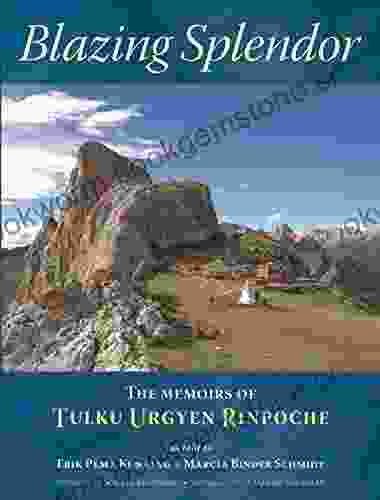
 Charlie ScottBlazing Splendor: Unveiling the Extraordinary Life and Teachings of Tulku...
Charlie ScottBlazing Splendor: Unveiling the Extraordinary Life and Teachings of Tulku... Hugh ReedFollow ·13k
Hugh ReedFollow ·13k Langston HughesFollow ·14.2k
Langston HughesFollow ·14.2k Matt ReedFollow ·11.8k
Matt ReedFollow ·11.8k Kazuo IshiguroFollow ·11.3k
Kazuo IshiguroFollow ·11.3k Xavier BellFollow ·19k
Xavier BellFollow ·19k Greg FosterFollow ·15.5k
Greg FosterFollow ·15.5k Junichiro TanizakiFollow ·10.4k
Junichiro TanizakiFollow ·10.4k Floyd RichardsonFollow ·13.8k
Floyd RichardsonFollow ·13.8k
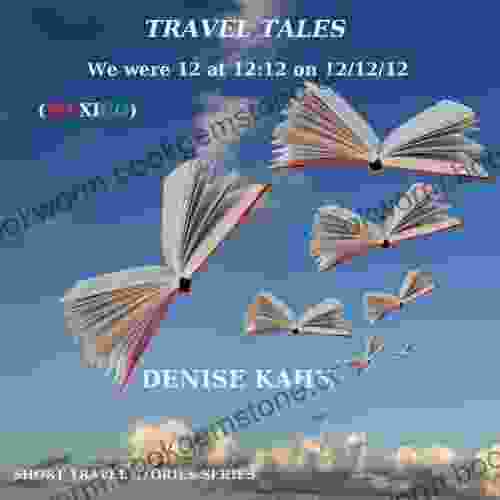
 Roland Hayes
Roland HayesWe Were 12 At 12:12 On 12/12/12: Adventure Travel Tales
On December 12, 2012, at...
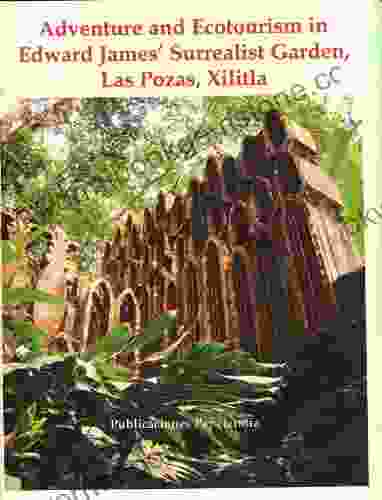
 Corey Green
Corey GreenUnveiling Adventure and Ecotourism in Edward James'...
Nestled amidst the lush...

 Douglas Foster
Douglas FosterBerkeley Artisan Food Markets: A Culinary Adventure in...
Nestled amidst...
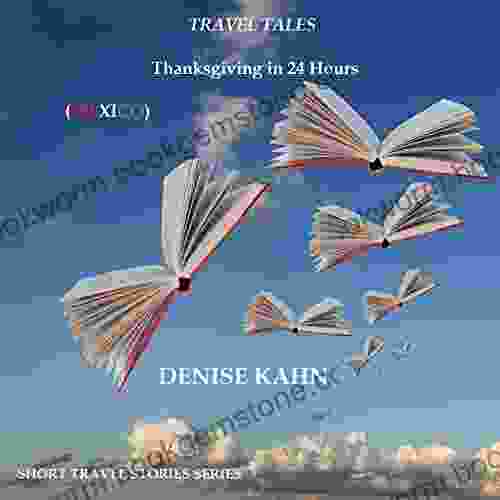
 Dan Henderson
Dan HendersonThanksgiving in 24 Hours: Travel Tales to Inspire Your...
Thanksgiving is a time for family, friends,...
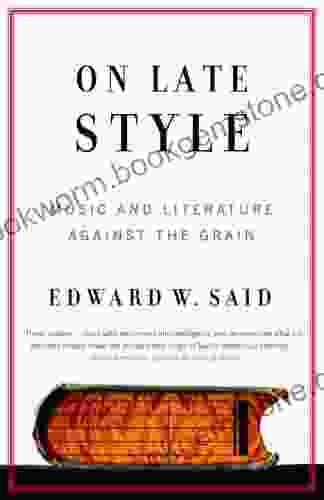
 Reginald Cox
Reginald CoxMusic and Literature Against the Grain: Exploring the...
: The Allure of...
4.6 out of 5
| Language | : | English |
| File size | : | 1232 KB |
| Text-to-Speech | : | Enabled |
| Screen Reader | : | Supported |
| Enhanced typesetting | : | Enabled |
| Word Wise | : | Enabled |
| Print length | : | 224 pages |
| Lending | : | Enabled |


